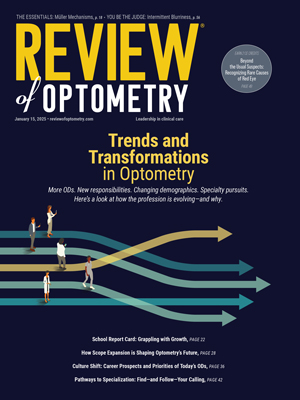| Increasing plasma omega-3 levels through dietary modifications may offer a practical and noninvasive approach to preventing and treating AMD. Photo by Sara Nichols on Unsplash. |
Currently, the protective effect of omega-3 polyunsaturated fatty acids (PUFAs) on AMD remains inconclusive, with inconsistent findings possibly due to limitations in previous studies. Understanding the role of omega-3 fatty acids in AMD prevention could lead to more manageable and noninvasive strategies for managing this condition. Researchers from Singapore aimed to determine the temporal and causal relationship between plasma omega-3 PUFAs and AMD using a prospective cohort analysis in the UK Biobank and Mendelian randomization analyses. Their findings suggested that higher plasma levels of omega-3 PUFAs and DHA were causally associated with reduced AMD risk.
“Increasing plasma omega-3 levels through dietary modifications may offer a practical and noninvasive approach to preventing and treating AMD in the broader community,” the study authors wrote in their paper, which was published in Ophthalmology.
This study used plasma omega-3 PUFA levels, instead of dietary assessment, as a more objective measurement and examined its association with incident AMD among individuals of European descent in the UK Biobank. MR analyses used genome-wide association study data on plasma levels of omega-3 and DHA (UK Biobank, n=115,006) and AMD (dry, wet and any). Among 258,350 AMD-free individuals, 5,068 (1.9%) developed AMD over a 12.9-year follow-up. Higher plasma levels (in mmol/L) of omega-3 (hazard ratio: 0.80) and DHA (hazard ratio: 0.65) were associated with lower risk of being diagnosed with AMD.
MR analyses showed causality between genetic predisposition to higher plasma omega-3 levels and lower risk of dry AMD (odds ratio; OR: 0.83), wet AMD (OR: 0.76) and any AMD (OR: 0.82). They also showed that each standard deviation increase in plasma omega-3 PUFAs level, based on genetic predisposition, was causally associated with a 17% reduction in dry AMD risk, a 24% reduction in wet AMD risk and an 18% reduction in any AMD risk. No significant interaction was found between omega-3/DHA levels and AMD genetic risks.
“Our prospective cohort analysis integrated with MR analyses established a protective and causal effect of higher plasma omega-3 PUFAs level on AMD,” the researchers concluded. “Further analysis is needed to explore whether omega-3 is effective for early AMD and geographic atrophy separately. As genotyping and other biomarkers become more widespread, personalized recommendations based on genotype data may allow precision public health in AMD prevention.”
| Click here for journal source. |
Xue CC, Li H, Yu M, et al. Omega-3 fatty acids as protective factors for age-related macular degeneration: prospective cohort and Mendelian randomization analyses. Ophthalmology. December 9, 2024. [Epub ahead of print]. |


